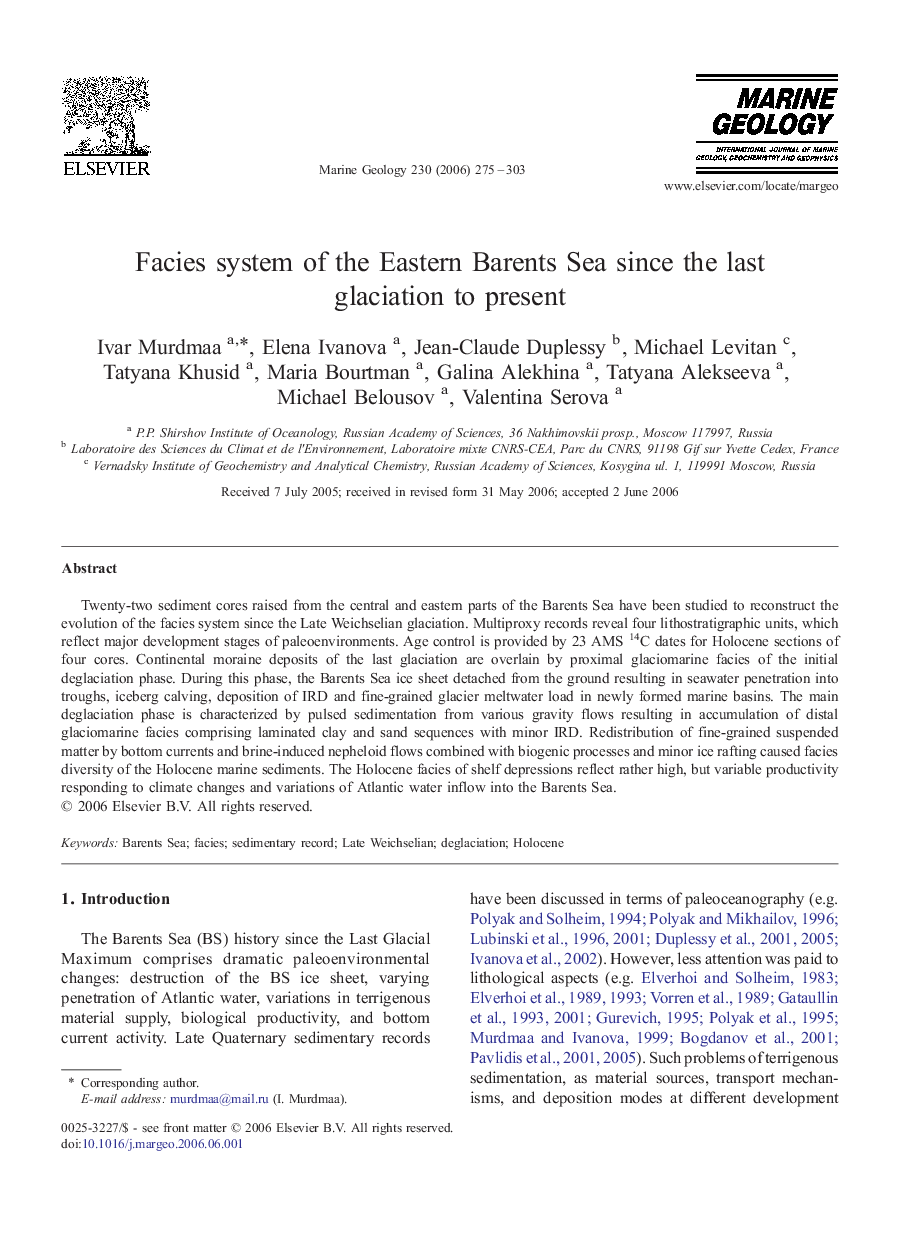| Article ID | Journal | Published Year | Pages | File Type |
|---|---|---|---|---|
| 4719740 | Marine Geology | 2006 | 29 Pages |
Twenty-two sediment cores raised from the central and eastern parts of the Barents Sea have been studied to reconstruct the evolution of the facies system since the Late Weichselian glaciation. Multiproxy records reveal four lithostratigraphic units, which reflect major development stages of paleoenvironments. Age control is provided by 23 AMS 14C dates for Holocene sections of four cores. Continental moraine deposits of the last glaciation are overlain by proximal glaciomarine facies of the initial deglaciation phase. During this phase, the Barents Sea ice sheet detached from the ground resulting in seawater penetration into troughs, iceberg calving, deposition of IRD and fine-grained glacier meltwater load in newly formed marine basins. The main deglaciation phase is characterized by pulsed sedimentation from various gravity flows resulting in accumulation of distal glaciomarine facies comprising laminated clay and sand sequences with minor IRD. Redistribution of fine-grained suspended matter by bottom currents and brine-induced nepheloid flows combined with biogenic processes and minor ice rafting caused facies diversity of the Holocene marine sediments. The Holocene facies of shelf depressions reflect rather high, but variable productivity responding to climate changes and variations of Atlantic water inflow into the Barents Sea.
